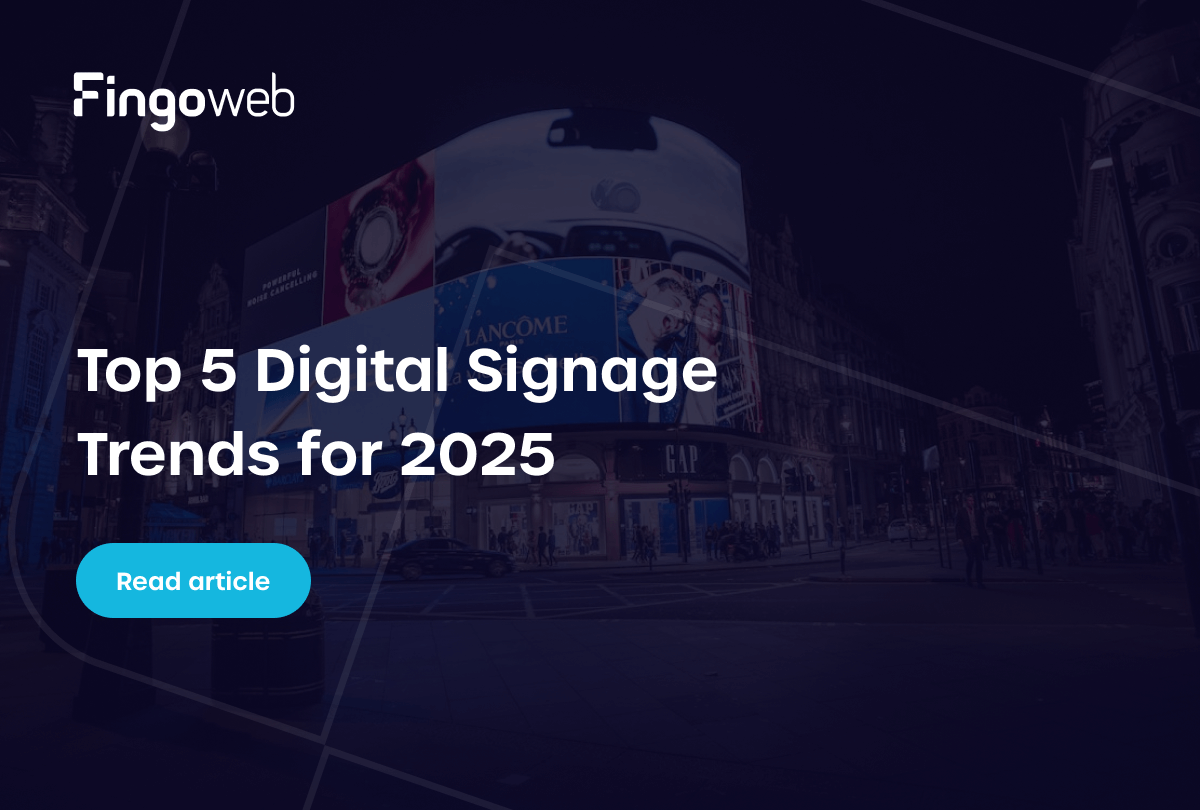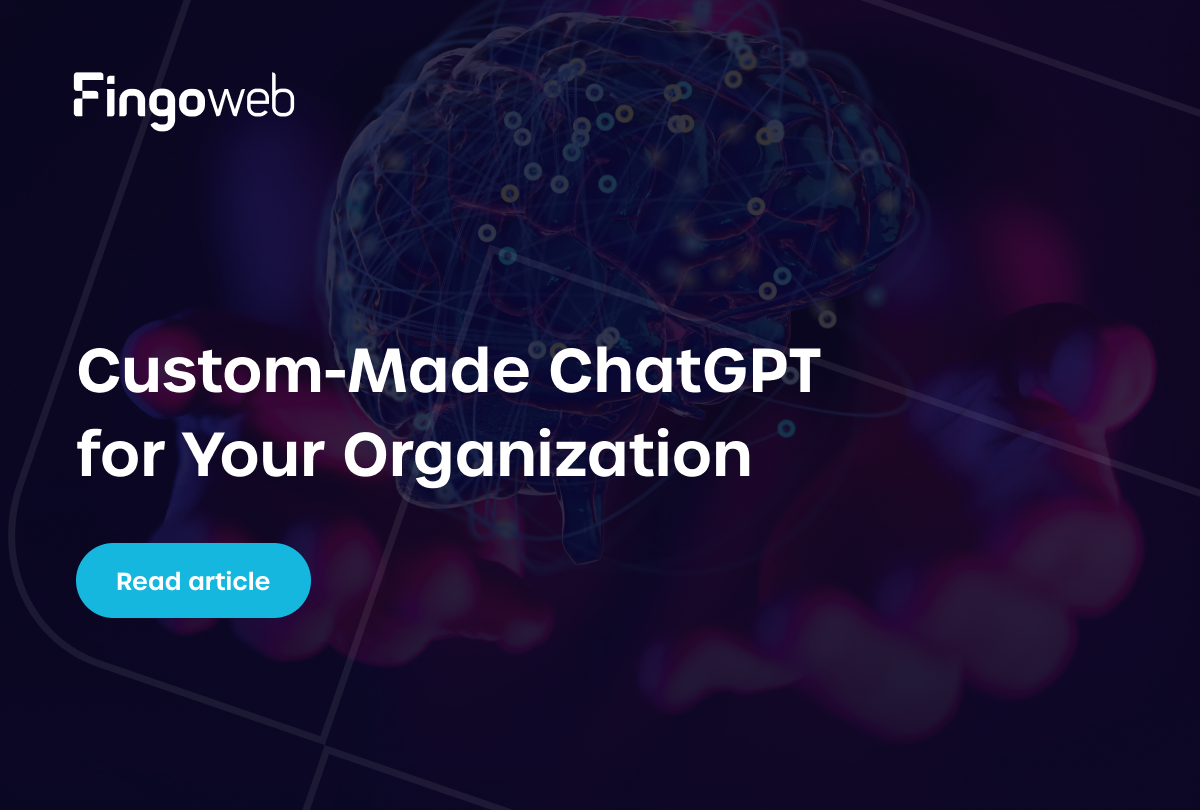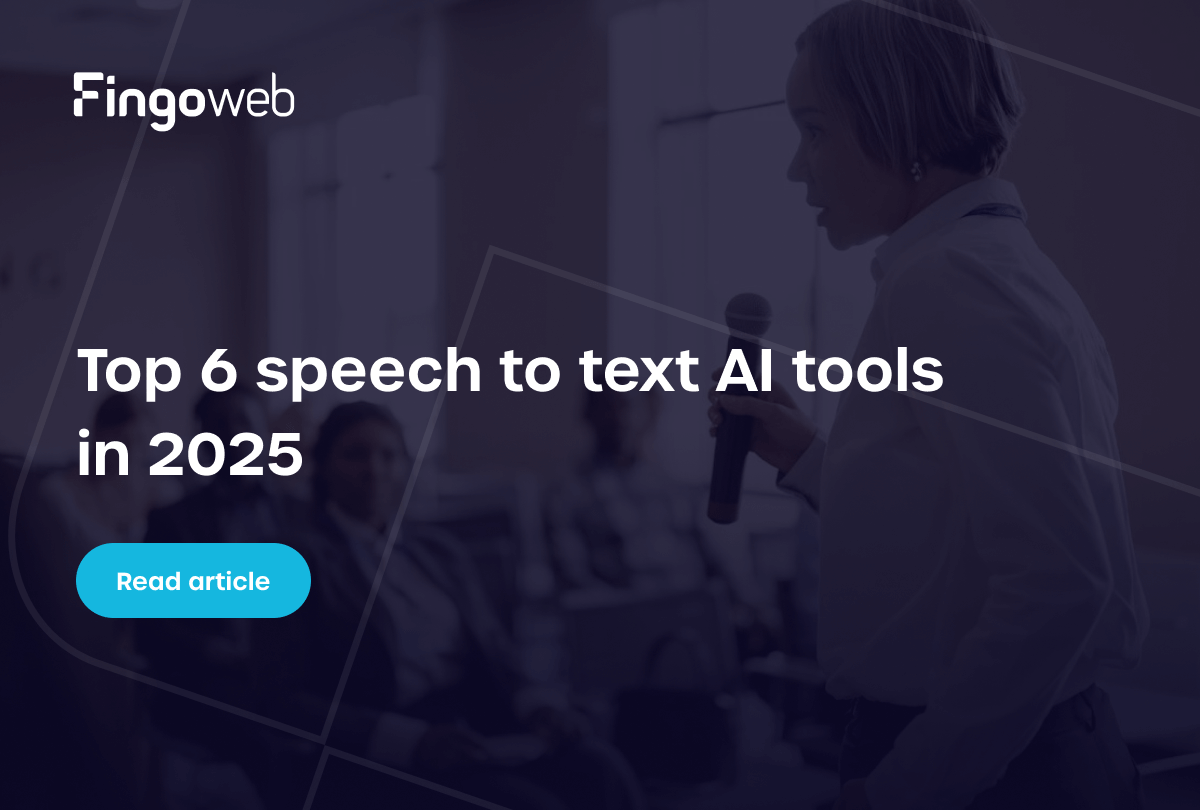Legacy app modernization is the process of updating outdated applications so they remain secure, efficient, and aligned with current business needs. Legacy systems often drain resources, limit scalability, and increase security risks, making it harder for companies to innovate and grow. In fact, 62% of organizations still rely on legacy software, and 43% cite security vulnerabilities as their biggest concern, according to a 2025 survey of U.S. IT professionals. Through modernization, businesses can turn these challenges into opportunities – reducing costs, improving user experience, and enabling integrations with modern technologies.
In this article, we explain what legacy app modernization really means, why companies choose to invest in it, and how to approach the process in a structured way. If your organization still relies on aging software, this guide will help you understand when and how to take the next step.
Legacy app modernization – definition
Legacy app modernization refers to the process of updating and improving outdated software applications and systems to meet current business needs and technological standards. Legacy systems are often characterized by older technologies that struggle to keep pace with modern requirements, leading organizations to seek effective legacy app modernization strategies.
What are legacy systems?
Legacy systems are applications built in older technologies that remain central to daily operations, but are increasingly difficult to scale, maintain, and secure. They often include ERP platforms and intranets developed years ago, which still support critical business processes, but no longer meet modern standards. Modernization becomes essential when these systems limit efficiency, flexibility, and innovation.
Examples of common legacy technologies include:
- PHP frameworks such as Yii, Drupal, or CakePHP;
- Python applications built on Django;
- Ruby on Rails systems for ERP or intranet solutions.
Instead of rebuilding everything from scratch, a modular migration approach makes it possible to modernize step by step – moving each module to newer technologies like React or Laravel individually while keeping the system fully operational.
Problems that make an app legacy
An application is often considered a legacy app when it shows clear signs of being outdated, fragile, or unable to keep up with current business needs. These issues not only slow down operations but also put the organization at risk, both technically and financially.
Here are the most common problems that push systems into the “legacy” category:
- Frequent system crashes and downtime – unstable applications disrupt daily operations, reduce employee productivity, and damage customer trust.
- Poor integration capabilities – older systems struggle to connect with modern tools such as CRM, cloud platforms, or payment gateways, creating silos and manual workarounds.
- Lack of vendor or community support – outdated frameworks and libraries (e.g., older PHP, Django, or Rails versions) no longer receive security patches or updates.
- High maintenance costs – legacy code requires specialized knowledge that is hard to find, making fixes and updates both slow and expensive.
- Security vulnerabilities – older apps often miss compliance with current standards (e.g., GDPR, ISO, HIPAA), leaving sensitive data exposed to risks.
- Limited scalability and performance – applications built years ago were not designed for today’s workloads, leading to slow response times or inability to handle growth.
- Outdated user experience – clunky interfaces and poor mobile support frustrate users, reduce adoption, and weaken competitiveness.
In short: if your ERP, intranet, or other business-critical application shows several of these signs, it is already a legacy system in need of modernization.
Why companies choose legacy app modernization?
Companies opt for legacy software modernization to enhance their overall application security and ensure compliance with current industry standards. Additionally, modernizing legacy systems can vastly improve usability and user experience, making the applications more intuitive and efficient for end-users.
Stronger application security and compliance
A major reason for legacy app modernization is the growing demand for robust security and compliance. Outdated systems often rely on unsupported frameworks, leaving them exposed to known vulnerabilities and increasing the risk of data breaches. They may also fail to meet modern regulatory standards such as GDPR, HIPAA, or PCI DSS, which can result in heavy fines and reputational damage.
Modernized applications allow companies to implement up-to-date security protocols, stronger authentication, and better monitoring. They also provide a foundation for maintaining continuous compliance as regulations evolve. In essence, modernization ensures that critical systems remain both secure and trustworthy in today’s threat landscape.
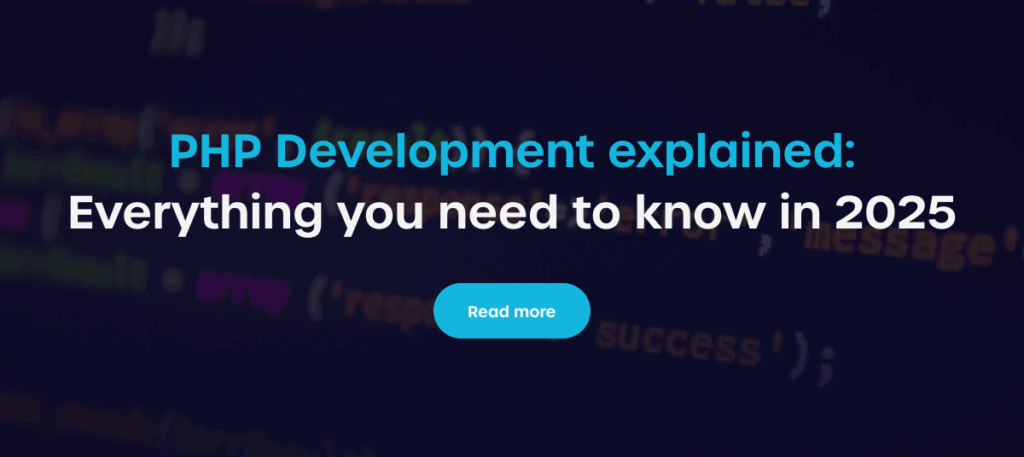
Improved usability and user experience
A key motivation for legacy app modernization is the need to improve usability and deliver a smoother, more intuitive user experience. Outdated interfaces and inefficient workflows can slow down internal processes, frustrate employees, and create unnecessary barriers for customers. By modernizing legacy ERP or intranet systems, companies can significantly boost productivity, streamline daily operations, and even increase sales efficiency.
Through modernization, organizations can:
- Redesign outdated interfaces to make them cleaner, faster, and easier to navigate.
- Simplify user workflows so employees can complete tasks in fewer steps, saving valuable time.
- Adopt modern frameworks such as React to improve responsiveness and performance.
- Enhance employee and customer satisfaction by creating systems that are intuitive, efficient, and engaging to use.
In short: legacy app modernization transforms complex, outdated systems into intuitive tools that help teams work faster, serve customers better, and directly support business growth.
Enabling new capabilities with cloud, integrations, and AI
Modernizing legacy systems not only solves existing technical challenges but also enables organizations to unlock entirely new capabilities. Moving to the cloud provides scalable infrastructure, easier maintenance, and global accessibility, allowing applications to handle growth without major hardware investments. It also simplifies integration with external tools such as CRMs, e-commerce platforms, and analytics systems, eliminating data silos and enabling real-time information flow across departments.
By introducing AI and automation into modernized applications, companies can take advantage of predictive analytics, intelligent recommendations, and process optimization that were previously impossible with outdated architectures. These improvements enhance decision-making, streamline repetitive tasks, and reduce human error. Ultimately, legacy app modernization creates a flexible foundation for innovation – empowering businesses to adapt faster, scale smarter, and continuously deliver value.
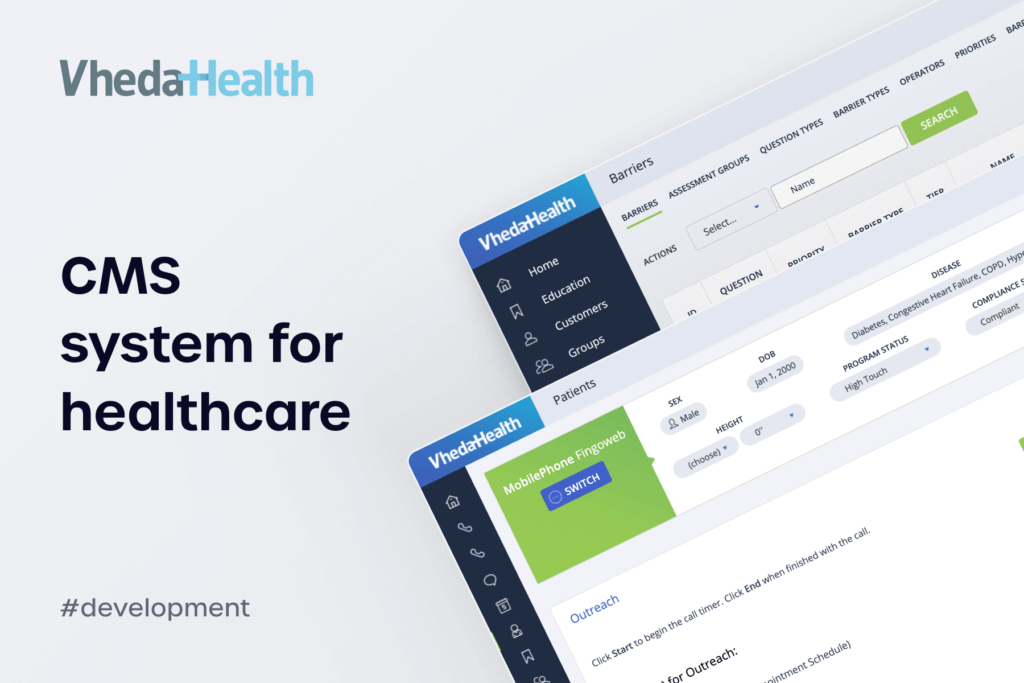
How to start modernization with low risk?
Starting the process of legacy app modernization can feel daunting, but with careful planning, organizations can minimize risk. Crucial steps include preparing discovery documentation and establishing baseline metrics, which will guide the modernization effort effectively.
Prepare discovery documentation and baselines
Preparing thorough discovery documentation is crucial when starting a legacy app modernization project. It helps build a complete understanding of the current system and sets a solid foundation for planning future improvements. This phase identifies technical, functional, and business gaps that guide every modernization decision.
Key steps in the discovery process include:
- Assessing the current state of the application – reviewing architecture, code quality, dependencies, and infrastructure setup.
- Documenting existing functionalities – mapping features, integrations, and workflows to understand how the system supports business operations.
- Identifying pain points and risks – noting recurring issues such as performance bottlenecks, usability problems, or outdated libraries.
- Establishing measurable baselines – recording data on performance, user satisfaction, and security posture to track improvements during modernization.
Discovery documentation ensures every modernization effort is data-driven, structured, and focused on measurable business outcomes.


Build the business case and budget
Building a solid business case for legacy app modernization is essential to secure leadership support, allocate resources effectively, and set realistic expectations for outcomes. A well-prepared plan should clearly show the value of modernization, supported by financial data, measurable goals, and a risk-aware budget.
The most important elements to include in the business case and budget:
- Objectives and success metrics – define what modernization should achieve (e.g., lower maintenance costs, improved uptime, enhanced UX, stronger security).
- Scope of work – outline which applications, modules, or features will be modernized and which will remain unchanged.
- Detailed cost breakdown – include expenses for development, testing, cloud infrastructure, licenses, third-party tools, and staff training.
- Risk and downtime assessment – evaluate potential service interruptions, data migration challenges, and mitigation strategies.
- ROI and payback period – estimate long-term savings, productivity gains, and revenue impact to demonstrate financial viability.
- Timeline and milestones – define the phases of modernization, expected delivery dates, and dependencies.
- Stakeholder alignment – identify decision-makers, budget owners, and teams responsible for execution and oversight.
A clear and well-supported business case turns legacy app modernization into a strategic, results-driven initiative that aligns both technical goals and business priorities.
Choose experienced tech partner
Selecting the right technology partner is one of the most critical decisions in reducing the risks and ensuring the success of legacy app modernization. A skilled partner brings not only technical expertise but also a strategic perspective on how to modernize systems without disrupting business operations. The right team can assess existing architectures, recommend modernization paths, and implement modern frameworks such as Laravel and React to create scalable, future-ready solutions.
At Fingoweb, our experience includes modernizing ERP and intranet systems built with older technologies like PHP (Yii, Drupal, CakePHP), Python (Django), and Ruby on Rails. We focus on modular migration – upgrading systems step by step, module by module – to maintain full operational continuity. Throughout the process, we work closely with internal teams, helping them understand new architectures, integrate modern tools, and adopt best development practices.
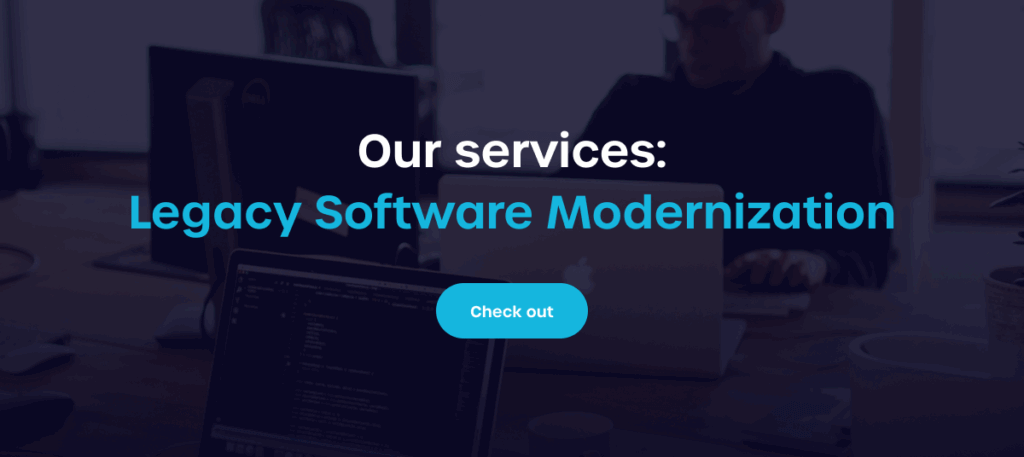
FAQ - Legacy app modernization
What is legacy app modernization in simple terms?
Legacy app modernization is essentially the process of updating old software applications and systems to improve their performance, security, and usability. It involves transforming outdated technologies into current, efficient solutions that better serve business goals.
How do we choose between rehosting, replatforming, refactoring, rebuilding, or replacing?
Choosing the right approach for legacy app modernization depends on the system’s current state, business goals, and available resources. Each modernization path offers different benefits, costs, and timelines, so understanding their trade-offs is essential before committing to one.
Here’s a breakdown of the main approaches:
- Rehosting (Lift and Shift) – moves the application to a new infrastructure, such as the cloud, without changing its core code. It’s fast and cost-effective but offers limited long-term flexibility.
- Replatforming – makes minor adjustments to optimize the app for a new platform, improving performance and scalability while keeping the core architecture mostly intact.
- Refactoring – restructures the codebase to make it cleaner, more maintainable, and compatible with modern frameworks without changing core functionality.
- Rebuilding – redesigns and rewrites the application from scratch using modern technologies to achieve better scalability, performance, and UX.
- Replacing – retires the old system completely and adopts a new, ready-made solution or custom-built application that better fits current business processes.
Selecting the right path involves balancing short-term efficiency with long-term sustainability—choosing an approach that aligns modernization goals with the company’s strategic vision.
How can we estimate cost, timeline, and ROI for a legacy app modernization project?
Estimating cost, timeline, and return on investment (ROI) for a legacy app modernization project requires a detailed analysis of current system performance, desired outcomes, and the complexity of required changes. Organizations should develop comprehensive project plans that outline tasks, resources, and potential risks while also incorporating metrics that will help measure success post-modernization.
How do we minimize downtime and data migration risk during legacy app modernization?
Minimizing downtime and data migration risk during legacy app modernization requires careful preparation, controlled execution, and continuous validation. The goal is to maintain business continuity while introducing new systems or components.
Effective strategies include:
- Phased rollouts – modernize and deploy in stages, allowing parts of the system to remain operational while others are updated.
- Parallel runs – run the legacy and modernized systems simultaneously for a defined period to verify functionality and data consistency.
- Automated data migration tools – use scripts and ETL processes to reduce manual errors and ensure accurate, consistent data transfer.
- Comprehensive backup and recovery plans – create secure snapshots of databases and configurations before each migration step to prevent data loss.
- Extensive testing and validation – perform load, integration, and user acceptance tests after every phase to confirm stability and accuracy.
A structured migration strategy built on these principles ensures the modernization process enhances reliability rather than disrupting day-to-day operations.





